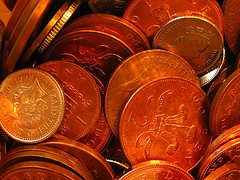This time it will all be different
Jan 17th 2008 | SÃO PAULO
From The Economist print edition
Why Brazil is better placed than it used to be to cope with a world slowdown
BRAZILIANS know about economic and financial crises. The squalls afflicting America and threatening Europe look like a gentle breeze when compared with the frequent and violent blow-ups that litter Brazil's economic history. Much of the problem has been Brazil's vulnerability to shocks imported from around the rest of the globe. So what might happen if the economies in the rich world stumble again this year?
Recent precedents do not look good. Since the introduction of a new currency, the real, in 1994, which serves as the year zero for economic policy, growth has picked up to a reasonable rate three times. Each time, points out Eduardo Giannetti da Fonseca, an economist, people have speculated that Brazil was at last on the road to a bright new future. And each time something has come along to puncture this optimism: in 1998 it was the Asian financial crisis, in 2001 Argentina's bond default and in 2005 a rapid rise in inflation.
Now bullishness is abundant once again. The economy grew at an estimated annualised rate of 6% in the final quarter of last year (which is probably too fast). The Bovespa, Brazil's stockmarket, jumped by 60% in value during 2007. And yet even though recent history counsels caution, there are reasons to believe that the economy should cope better with whatever the world throws at it.
“Brazil has never been so well placed to face a downturn,” says Mailson da Nobrega, finance minister from 1988 to 1990, a period that coincided with an inflation crisis. He now works for Tendencias, a consultancy. Arminio Fraga, who was in charge of the central bank during the Argentine collapse and the bond market's swoon at the prospect of Luiz Inácio Lula da Silva's election as president, cautiously agrees. “A lot has been driven by favourable winds,” says Mr Fraga, who now runs Gavea, an investment fund. “If they stop then we are not in a position to blow up, but it won't be irrelevant.”
What changed? First, domestic demand is strong. Brazil's headline real interest rate is just below 7% which, as Alexandre Bassoli of HSBC bank points out, would tip most countries into recession, but is low by Brazilian standards. The result has been a flowering of credit, which helped domestic demand grow by an annualised rate of almost 7% in the third quarter. It would take a sharp rise in rates to kill this off, and that looks unlikely.
Second, Brazil is fairly well integrated into world markets. It is not overly dependent on America, which accounts for less than a fifth of exports. The remaining four-fifths are reasonably well spread between Europe, Asia and the rest of Latin America. Admittedly, most of what Brazil produces for foreign consumption is in the form of primary goods (from orange juice to footballers), which means that export growth correlates strongly with commodity prices. But exports are not made up of any single commodity (unlike oil-rich Venezuela's, for example). “Even if China buys less Brazilian iron ore, the hope is that Chinese people will keep eating Brazilian protein,” says Jose Mendonca de Barros of MB Associados, a consultancy.
Third, Brazil is less vulnerable to financial shocks than it once was. A large part of this is due to a combination of a central bank that acts independently and transparently, publishing minutes of meetings promptly on its website; and a floating exchange rate, adopted in 1999. Before then, whenever the current account deteriorated, the central bank was forced to hike rates, killing growth.
Brazil has retired its dollar-denominated debt, which has been a source of trouble in earlier financial crises. In the past, when the currency depreciated this debt ballooned, causing further problems. Now that government debt is denominated in reais, a similar move in the exchange rate reduces government liabilities. This was tested in August last year, when the real lost 11% of its value in a couple of weeks, and the government debt effectively shrank. Foreign direct investment is strong, and Brazil now holds more dollars than it owes, a happy development that has led to misguided suggestions of setting up a sovereign wealth fund.
Even so, Brazil is clearly far from immune to what happens in the rest of the world. The economy also seems to be moving into a less benign phase. After years of big surpluses, the current account looks set to run a small deficit this year. Inflation, which had been falling, picked up toward the end of last year to give an annual inflation rate in December of 4.5%. That is right on the central bank's target, and forecasters expect inflation to increase only slightly this year. But markets have been wrong on this before.
Moreover, the economy still suffers from problems that make growth above 5% look like a stretch. Government debt is still too high, Brazil invests too little, and the government takes too much for itself, spending it on things that do little to raise the economy's potential. “The easy part of growth is over,” says Mr da Fonseca. But if Brazil is able to sustain steady growth without being blown off-course by events elsewhere, the country will look very different in ten years' time.
18.1.08
Economia Brasileira
A seguir, uma análise da economia brasileira pela The Economist

